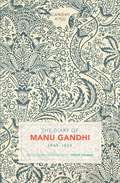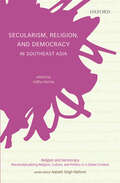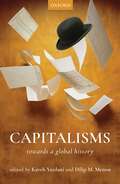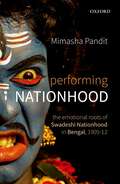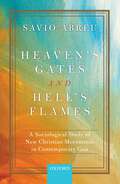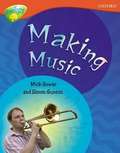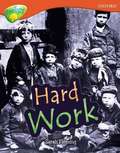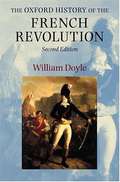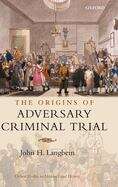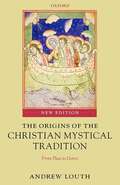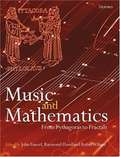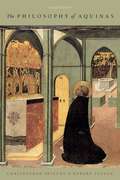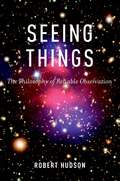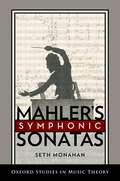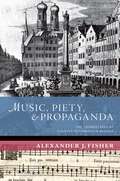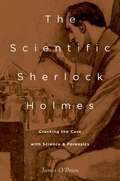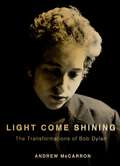- Table View
- List View
The Diary of Manu Gandhi: 1943–1944
by Tridip SuhrudManu Gandhi, M.K. Gandhi’s grand-niece, joined him in 1943 at the age of fifteen. An aide to Gandhi’s ailing wife Kasturba in the Aga Khan Palace prison in Pune, Manu remained with him until his assassination. She was a partner in his final yajna, an experiment in Brahmacharya, and his invocation of Rama at the moment of his death. Spanning two volumes, The Diary of Manu Gandhi is a record of her life and times with M.K. Gandhi between 1943 and 1948. Authenticated by Gandhi himself, the meticulous and intimate entries in the diary throw light on Gandhi’s life as a prisoner and his endeavour to establish the possibility of collective non-violence. They also offer a glimpse into his ideological conflicts, his efforts to find his voice, and his lonely pilgrimage to Noakhali during the riots of 1946. The first volume (1943–44) chronicles the spiritual and educational pursuits of an adolescent woman who takes up writing as a mode of self-examination. The author shares a moving portrait of Kasturba Gandhi’s illness and death and also unravels the deep emotional bond she develops with Gandhi, whom she calls her ‘mother’.
Words of Her Own: Women Authors in Nineteenth-Century Bengal
by Maroona MurmuWords of Her Own situates the experiences and articulations of emergent women writers in nineteenth-century Bengal through an exploration of works authored by them. Based on a spectrum of genres—such as autobiographies, novels, and travelogues—this book examines the sociocultural incentives that enabled the dawn of middle-class Hindu and Brahmo women authors at that time. Murmu explores the intersections of class, caste, gender, language, and religion in these works. Reading these texts within a specific milieu, Murmu sets out to rectify the essentialist conception of women’s writings being a monolithic body of works that displays a firmly gendered form and content, by offering rich insights into the complex world of subjectivities of women in colonial Bengal. In attempting to do so, this book opens up the possibility of reconfiguring mainstream history by questioning the scholarly conceptualization of patriarchy being omnipotent enough to shape the intricacies of gender relations, resulting in the flattening of self-fashioning by women writers. The book contends that there were women authors who flouted the norms of literary aesthetics and tastes set by male literati, thereby creating a literary tradition of their own in Bangla and becoming agents of history at the turn of the century.
Secularism, Religion, and Democracy in Southeast Asia (Religion and Democracy: Reconceptualizing Religion, Culture, and Politics in a Global Context)
by Vidhu VermaUntil the 1990s, secularism was understood largely as exclusion of religion from the public domain. However, in the last two decades, the world has witnessed the return of religion as a medium and subject of national, regional, and global politics. With such a shift, the previously unquestioned Western values of modernity and secularism find themselves at loggerheads with the increasing assertion of religious identity, which results in difference-based conflicts. This antagonism also gives rise to a vibrant, religiously pluralistic civil society and speaks of a post-secular turn in modern Southeast Asian democracies. Secularism, Religion, and Democracy in Southeast Asia tries to understand the rise of religion in modern democracies and how everyday economic, social, and political conditions aid this post-secular phenomenon in Southeast Asia. Setting itself apart from most studies of religion in Southeast Asia through its regional focus, this volume explores the ideas, practices, state responses, and anxieties related to the religious–secular divide in this geopolitical region.
A History of the Present: A Biography of Indian South Africans, 1990–2019
by Ashwin Desai Goolam VahedThrough the long 20th century, Indian South Africans lived under the whip of settler colonialism and white minority rule, which saw the passing of a slew of legislation that circumscribed their freedom of movement, threatened repatriation, and denied them citizenship, all the while herding them into racially segregated townships. This volume chronicles the broad outlines of this history. Taking the story into the present, it provides an analysis of how Indian South Africans have responded to changes wrought by the remarkable collapse of apartheid and the holding of the first democratic elections in 1994. Drawing upon archival records, in-depth interviews, and ethnography, this study examines the ways in which Indian South Africans define themselves and the world around them, and how they are defined by others. It tells of the incredible journey of Indian South Africans, many of whom are fourth and fifth generation, towards being recognized as citizens in the land of their birth and how, while often attracted by and seeking to explore their roots in India, they continue to dig deeper roots in African soil.
Capitalisms: Towards a Global History
by Kaveh Yazdani Dilip M. MenonConventional accounts often conceive the genesis of capitalism in Europe within the conjunctures of agricultural, commercial, and industrial revolutions. Challenging this widely believed cliché, this volume traces the history of capitalism across civilizations, tenth century onwards, and argues that capitalism was neither a monolithic entity nor exclusively an economic phenomenon confined to the West. Looking at regions as diverse as England, South America, Russia, North Africa, and East, South, West, and Southeast Asia, the book explores the plurality of developments across time and space. The chapters analyse aspects such as historical conjunctures, commodity production and distribution, circulation of knowledge and personnel, and the role of mercantile capital, small producers, and force—all the while stressing the necessity to think beyond present-day national boundaries. The book argues that the multiple histories of capitalism can be better understood from a trans-regional, intercontinental, and interconnected perspective.
Performing Nationhood: The Emotional Roots of Swadeshi Nationhood in Bengal, 1905–12
by Mimasha PanditThis book serves as the corridor to one’s ‘self’. It began as a humble attempt to interrogate the performance history of Swadeshi Bengal. The burgeoning public space and audibility of voices hitherto unheard presented a two-way problem, for the colonisers, as well as for the colonised. The thinking mind that hid behind a facade of obedience suddenly appeared before all. The transparent veil separating the hidden from the manifest was torn apart. In the context of swadeshi and boycott agitation, performative spaces like theatre, jatra, and songs did not just serve as a forum for disseminating the notions of nationhood put forward by the intellectuals. The ideas gained a life of their own once they were placed in the performative space. Encompassing both the performer and the audience/recipient of the ideas, the notion underwent a change at various planes of consciousness. The notion of nation, as disseminated by the performances, acquired a different meaning at the level of enactment, and attained an entirely new substance when received by the audience. None of these exchanges occurred in complete passivity of any one party present in the performative space. Consequently, the emergent emotion of nationhood developed as a nuanced image of ‘self’. This book has tried to locate the beginning of that emotion of national ‘self’.
Heaven’s Gates and Hell’s Flames: A Sociological Study of New Christian Movements in Contemporary Goa
by Savio AbreuPentecostal-Charismatic Christianity is one of the largest religious movements in the world today. It is a recent form of Christianity that emphasizes direct personal experience of God through baptism with the Holy Spirit. While the literature on Pentecostalism is constantly rising, they mostly focus on Western societies and are from a theological perspective. There is a dearth of well-researched studies that critically analyse the phenomenon of Pentecostal–Charismatic Christianity in India. Addressing this gap, Heaven’s Gates and Hell’s Flames focuses on groups at the periphery of the religious space in Goa, while locating them within Christianity globally. It broadens our understanding of Pentecostal–Charismatic Christianity in Goa as a rapidly expanding and overtly evangelistic movement within a pluralist, non-Christian society. Abreu assesses the impact of religion on society, analysing how the symbols, beliefs, rituals, and organizational structure of the neo-Pentecostal sects and the Catholic Charismatic Renewal influence religious identities, world views, and the everyday life activities of individual adherents. This the author does by drawing on extensive fieldwork, concepts, analyses, and interpretations provided by scholars of religion in sociology, anthropology, history, as well as theology.
Mega Mammals in Ancient India: Rhinos, Tigers, and Elephants
by Shibani BoseSince antiquity, big mammals have inspired fear as well as fantasy among humans. Not only do megafauna pervade the domains of religion, art, literature, and folklore, it is also now widely acknowledged that they can serve as important, if not always adequate, indices of environmental quality. In this book, Shibani Bose looks into eras bygone in order to chronicle the journeys of three mega mammals, the rhinoceros, elephant, and tiger, across millennia in early north India. Carefully sifting through archaeological evidence and literary records in Sanskrit, Pali, Prakrit, and classical Western accounts, Bose documents the presence of these big mammals in diverse cultural contexts, from hunter-gatherer societies to the first urban civilization of India and beyond. This work aims to reconstruct human interactions with these mega species through time while trying to understand the larger ecology of ancient India. This book is especially well-timed as the conservation of our megafaunal heritage is a major concern for biologists, ecologists, and conservationists. It underlines the need to historicize human interactions with these mega mammals with the contention that awareness regarding their past is critical for their future.
Letters of Pliny
by the Younger PlinyThis selection of Pliny's letters is designed to be used with A Level classes. The commentary helps students who have no special knowledge of the social and political history of the Roman empire. The selection provides a wide illustration of the private, public, and literary life of thecapital of the Roman empire in the early second century A. D. Includes vocabulary and notes.
Russia, 1855-1991: From Tsars To Commissars
by Peter OxleyFrom Alexander II, through Glasnost, to the present day, Russian history has been characterised by a drive to modernise - a recurring theme in this book.
Oxford Reading Tree, Level 13, TreeTops Non-Fiction: Making Music (PDF)
by Mick Gowar Simon GuntonBook band 13 grey. Oxford level 13. TreeTops Non-fiction offers fascinating titles in which children can access a wide range of interesting and thought-provoking topics. Supports the transition from learning to read, to reading to learn. Covers a wide range of popular topics, fueling discussion. Great for combinating literacy with other subjects. Covers a range of non-fiction text types needed to expand your students' reading skills. Stunning photography and artwork engages readers and brings topics to life.
Oxford Reading Tree, Level 13, TreeTops Non-Fiction: Hard Work (PDF)
by Sarah FlemingBook band 13 grey. Oxford level 13. TreeTops Non-fiction offers fascinating titles in which children can access a wide range of interesting and thought-provoking topics. Supports the transition from learning to read, to reading to learnCovers a wide range of popular topics, fueling discussion. Great for combinating literacy with other subjects. Covers a range of non-fiction text types needed to expand your students' reading skills. Stunning photography and artwork engages readers and brings topics to life.
The Oxford History of the French Revolution (PDF)
by William DoyleThis second edition of the most authoritative and comprehensive history of the French Revolution draws on a wealth of new research in order to reassess the greatest of all revolutions. It includes a generous chronology of events and an extended bibliographical essay providing an examination of the historiography of the Revolution. Beginning with the accession of Louis XVI in 1774, leading historian William Doyle traces the history of France through revolution, terror, and counter-terror, to the triumph of Napoleon in 1802, along the way analyzing the impact of these events in France upon the rest of Europe. He explores how a movement which began with optimism and general enthusiasm soon became a tragedy, not only for the ruling orders, but for millions of ordinary people all over Europe who paid the price for the destruction of the old political order and the struggle to establish a new one. Highly readable and meticulously researched, The Oxford History of the French Revolution will provide new insight into one of the most important events in European history.
The Origins Of Adversary Criminal Trial: (pdf) (Oxford Studies In Modern Legal History Ser.)
by John H. LangbeinThe adversary system of trial, the defining feature of the Anglo-American legal procedure, developed late in English legal history. For centuries defendants were forbidden to have legal counsel, and lawyers seldom appeared for the prosecution either. Trial was meant to be an occasion for the defendant to answer the charges in person. The transformation from lawyer-free to lawyer-dominated criminal trial happened within the space of about a century, from the 1690's to the 1780's. This book explains how the lawyers captured the trial. In addition to conventional legal sources, Professor Langbein draws upon a rich vein of contemporary pamphlet accounts about trials in London's Old Bailey. The book also mines these novel sources to provide the first detailed account of the formation of the law of criminal evidence. Responding to menacing prosecutorial initiatives (including reward-seeking thieftakers and crown witnesses induced to testify in order to save their own necks) the judges of the 1730's decided to allow the defendant to have counsel to cross-examine accusing witnesses. By restricting counsel to the work of examining and cross-examining witnesses, the judges intended that the accused would still need to respond in person to the charges against him. Professor Langbein shows how counsel manipulated the dynamics of adversary procedure to defeat the judges design, ultimately silencing the accused and transforming the very purpose of the criminal trial. Trial ceased to be an opportunity for the accused to speak, and instead became an occasion for defense counsel to test the prosecution case.
The Origins Of The Christian Mystical Tradition: From Plato To Denys (PDF)
by Andrew LouthOrigins of the Christian Mystical Tradition: From Plato to Denys
Music And Mathematics: From Pythagoras To Fractals (PDF)
by John Fauvel Raymond Flood Robin WilsonFrom Ancient Greek times, music has been seen as a mathematical art, and the relationship between mathematics and music has fascinated generations. This collection of wide ranging, comprehensive and fully-illustrated papers, authorized by leading scholars, presents the link between these two subjects in a lucid manner that is suitable for students of both subjects, as well as the general reader with an interest in music. Physical, theoretical, physiological, acoustic, compositional and analytical relationships between mathematics and music are unfolded and explored with focus on tuning and temperament, the mathematics of sound, bell-ringing and modern compositional techniques.
The Philosophy of Aquinas
by Christopher Shields Robert PasnauThis new and updated edition of Christopher Shields and Robert Pasnau's The Philosophy of Aquinas introduces the Aquinas' overarching explanatory framework in order to provide the necessary background to his philosophical investigations across a wide range of areas: rational theology, metaphysics, philosophy of human nature, philosophy of mind, and ethical and political theory. Although not intended to provide a comprehensive evaluation of all aspects of Aquinas' far-reaching writings, the volume presents a systematic introduction to the principal areas of his philosophy and attends no less to Aquinas' methods and argumentative strategies than to his ultimate conclusions. The authors have updated the second edition in light of recent scholarship on Aquinas, while streamlining and refining their presentation of the key elements of Aquinas' philosophy.
Seeing Things: The Philosophy of Reliable Observation
by Robert HudsonIn Seeing Things, Robert Hudson assesses a common way of arguing about observation reports called "robustness reasoning." Robustness reasoning claims that an observation report is more likely to be true if the report is produced by multiple, independent sources. Seeing Things argues that robustness reasoning lacks the special value it is often claimed to have. Hudson exposes key flaws in various popular philosophical defenses of robustness reasoning. This philosophical critique of robustness is extended by recounting five episodes in the history of science (from experimental microbiology, atomic theory, astrophysics and astronomy) where robustness reasoning is -- or could be claimed to have been -- used. Hudson goes on to show that none of these episodes do in fact exhibit robustness reasoning. In this way, the significance of robustness reasoning is rebutted on both philosophical and historical grounds. But the book does more than critique robustness reasoning. It also develops a better defense of the informative value of observation reports. The book concludes by relating insights into the failure of robustness reasoning to a popular approach to scientific realism called "(theoretical) preservationism." Hudson argues that those who defend this approach to realism commit similar errors to those who advocate robustness reasoning. In turn, a new form of realism is formulated and defended. Called "methodological preservationism," it recognizes the fundamental value of naked eye observation to scientists -- and the rest of us.
Mahler's Symphonic Sonatas (Oxford Studies in Music Theory)
by Seth MonahanWhy would Gustav Mahler (1860-1911), modernist titan and so-called prophet of the New Music, commit himself time and again to the venerable sonata-allegro form of Mozart and Beethoven? How could so gifted a symphonic storyteller be drawn to a framework that many have dismissed as antiquated and dramatically inert? Mahler's Symphonic Sonatas offers a striking new take on this old dilemma. Indeed, it poses these questions seriously for the first time. Rather than downplaying Mahler's sonata designs as distracting anachronisms or innocuous groundplans, author Seth Monahan argues that for much of his career, Mahler used the inner, goal-directed dynamics of sonata form as the basis for some of his most gripping symphonic stories. Laying bare the deeper narrative/processual grammar of Mahler's evolving sonata corpus, Monahan pays particular attention to its recycling of large-scale rhetorical devices and its consistent linkage of tonal plot and affect. He then sets forth an interpretive framework that combines the visionary insights of Theodor W. Adorno-whose Mahler writings are examined here lucidly and at length-with elements of Hepokoski and Darcy's renowned Sonata Theory. What emerges is a tensely dialectical image of Mahler's sonata forms, one that hears the genre's compulsion for tonal/rhetorical closure in full collision with the spontaneous narrative needs of the surrounding music and of the overarching symphonic totality. It is a practice that calls forth sonata form not as a rigid mold, but as a dynamic process-rich with historical resonances and subject to a vast range of complications, curtailments, and catastrophes. With its expert balance of riveting analytical narration and thoughtful methodological reflection, Mahler's Symphonic Sonatas promises to be a landmark text of Mahler reception, and one that will reward scholars and students of the late-Romantic symphony for years to come.
Pure and Modern Milk: An Environmental History since 1900
by Kendra Smith-HowardAmericans have never been more concerned about their food's purity. The organic trade association claims that three-quarters of all consumers buy organic foods each year, spending billions of dollars "Dairy farm families, health officials, and food manufacturers have simultaneously stoked human desires for an all-natural product and intervened to ensure milk's safety and profitability," writes Kendra Smith-Howard. In Pure and Modern Milk, she tells the history of a nearly universal consumer product, and sheds light on America's food industry. Today, she notes, milk reaches supermarkets in an entirely different state than it had at its creation. Cows march into milking parlors, where tubes are attached to their teats, and the product of their lactation is mechanically pumped into tanks. Enormous, expensive machines pasteurize it, fortify it with vitamins, remove fat, and store it at government-regulated temperatures. It reaches consumers in a host of forms: as fluid milk, butter, ice cream, and in apparently non-dairy foods such as whey solids or milk proteins. Smith-Howard examines the cultural, political, and social context, discussing the attempts to reform the production and distribution of this once-perilous product in the Progressive Era, the history of butter between the world wars, dairy waste at mid-century, and the postwar landscape of mass production. She asks how milk could be conceptualized as a "natural" product, even as it has been incorporated into Cheez Whiz and wood glue. And she shows how consumer's changing expectations have had repercussions back down the chain, affecting farmers, cows, and rural landscapes. A groundbreaking, interdisciplinary history, this book reveals the complexity and challenges of humanity's dependence on other species.
Darwin and His Children: His Other Legacy
by Tim M. BerraWhile much has been written about the life and works of Charles Darwin, the lives of his ten children remain largely unexamined. Most "Darwin books" consider his children as footnotes to the life of their famous father and close with the death of Charles Darwin. This is the only book that deals substantially with the lives of his children from their birth to their death, each in his or her own chapter. Tim Berra's Darwin and His Children: His Other Legacy explores Darwin's marriage to his first cousin, Emma Wedgwood, a devout Unitarian, who worried that her husband's lack of faith would keep them apart in eternity, and describes the early death of three children of this consanguineous marriage. Many of the other children rose to prominence in their own fields. William Darwin became a banker and tended the Darwin family's substantial wealth. Henrietta Darwin edited Charles' books and wrote a biography of her mother. Three of Darwin's sons were knighted and elected Fellows of the Royal Society: Sir George Darwin was the world's expert on tides, Sir Francis Darwin developed the new field of plant physiology, and Sir Horace Darwin founded the world-class Cambridge Scientific Instrument Company. Major Leonard Darwin was a military man, Member of Parliament, and patron of early genetic research. This book, richly illustrated with photographs of the Darwin family, demonstrates the intellectual atmosphere whirling about the Darwin household, portrays loving family relationships, and explores entertaining vignettes from their lives.
Darwin and His Children: His Other Legacy
by Tim M. BerraWhile much has been written about the life and works of Charles Darwin, the lives of his ten children remain largely unexamined. Most "Darwin books" consider his children as footnotes to the life of their famous father and close with the death of Charles Darwin. This is the only book that deals substantially with the lives of his children from their birth to their death, each in his or her own chapter. Tim Berra's Darwin and His Children: His Other Legacy explores Darwin's marriage to his first cousin, Emma Wedgwood, a devout Unitarian, who worried that her husband's lack of faith would keep them apart in eternity, and describes the early death of three children of this consanguineous marriage. Many of the other children rose to prominence in their own fields. William Darwin became a banker and tended the Darwin family's substantial wealth. Henrietta Darwin edited Charles' books and wrote a biography of her mother. Three of Darwin's sons were knighted and elected Fellows of the Royal Society: Sir George Darwin was the world's expert on tides, Sir Francis Darwin developed the new field of plant physiology, and Sir Horace Darwin founded the world-class Cambridge Scientific Instrument Company. Major Leonard Darwin was a military man, Member of Parliament, and patron of early genetic research. This book, richly illustrated with photographs of the Darwin family, demonstrates the intellectual atmosphere whirling about the Darwin household, portrays loving family relationships, and explores entertaining vignettes from their lives.
Music, Piety, and Propaganda: The Soundscapes of Counter-Reformation Bavaria (New Cultural History of Music)
by Alexander J. FisherMusic, Piety, and Propaganda: The Soundscapes of Counter-Reformation Bavaria explores the nature of sound as a powerful yet ambivalent force in the religious struggles that permeated Germany during the Counter-Reformation. Author Alexander J. Fisher goes beyond a musicological treatment of composers, styles, and genres to examine how music, and more broadly sound itself, shaped the aural landscape of Bavaria as the duchy emerged as a militant Catholic bulwark. Fisher focuses particularly on the ways in which sound--including bell-ringing, gunfire, and popular song, as well as cultivated polyphony--not only was deployed by Catholic secular and clerical elites to shape the religious identities of Bavarian subjects, but also carried the potential to challenge and undermine confessional boundaries. Surviving literature, archival documents, and music illustrate the ways in which Bavarian authorities and their allies in the Catholic clergy and orders deployed sound to underline crucial theological differences with their Protestant antagonists, notably the cults of the Virgin Mary, the Eucharist, and the saints. Official and popular rituals like divine worship, processions, and pilgrimages all featured distinctive sounds and music that shaped and reflected an emerging Catholic identity. Although officials imposed a severe regime of religious surveillance, the Catholic state's dominance of the soundscape was hardly assured. Fisher traces archival sources that show the resilience of Protestant vernacular song in Bavaria, the dissemination and performance of forbidden, anti-Catholic songs, the presence of Lutheran chorales in nominally Catholic church services into the late 16th century, and the persistence of popular "noise" more generally. Music, Piety, and Propaganda thus reveals historical, theological, and cultural issues of the period through the piercing dimension of its sounds, bringing into focus the import of sound as a strategic cultural tool with significant impact on the flow of history.
The Scientific Sherlock Holmes: Cracking the Case with Science and Forensics
by James O'BrienOne of the most popular and widely known characters in all of fiction, Sherlock Holmes has an enduring appeal based largely on his uncanny ability to make the most remarkable deductions from the most mundane facts. The very first words that Sherlock Holmes ever says to Dr. Watson are, "How are you? You have been in Afghanistan, I perceive." Watson responds, "How on earth did you know that?" And so a crime-solving legend is born. In The Scientific Sherlock Holmes, James O'Brien provides an in-depth look at Holmes's use of science in his investigations. Indeed, one reason for Holmes's appeal is his frequent use of the scientific method and the vast scientific knowledge which he drew upon to solve mysteries. For instance, in heart of the book, the author reveals that Holmes was a pioneer of forensic science, making use of fingerprinting well before Scotland Yard itself had adopted the method. One of the more appealing aspects of the book is how the author includes real-world background on topics such as handwriting analysis, describing how it was used to capture the New York Zodiac killer and to clinch the case against the Lindbergh baby kidnapper. Sherlock Holmes was knowledgeable about several sciences, most notably chemistry. Therefore the book takes a close look at Holmes the chemist and discusses, for example, chemical poisons such as carbon monoxide, chloroform, and Prussic acid (the historical name for hydrogen cyanide). The author also debunks Isaac Asimov's famous assertion that Holmes was a blundering chemist. In addition, the book discusses mathematics, physics, biology, astronomy, meteorology, and geology, always in the context of Holmes's exploits. Sherlock Holmes continues to fascinate millions of readers and movie goers alike. The Scientific Sherlock Holmes is a must-read for the legion of fans of this most beloved of all fictional detectives. The paperback version will continue to interest two primary groups: the community of avid Holmes fans who meet regularly to celebrate and discuss the stories, and the scientific community. What scientist would not wish to be "the most perfect reasoning and observing machine that the world has seen"? Sherlock Holmes, Watson assures us, was precisely that. Scientists admire Holmes's devotion to fact, his intellectual brilliance, and the way he separates emotion from his work, and will be especially attracted by a book that explicitly discusses Holmes from a scientific perspective.
Light Come Shining: The Transformations of Bob Dylan (Inner Lives)
by Andrew McCarronBob Dylan is the prince of self-reinvention and deflection. Whether it's the folkies of Greenwich Village, the student movement of the 1960s and 1970s, Born Again Christians, the Chabad Lubavitch community, or English Department postmodernists, specific intellectual and sociopolitical groups have repeatedly claimed Bob Dylan as their spokesperson. But in the words of filmmaker Todd Haynes, who cast six actors to depict different facets of Dylan's life and artistic personae in his 2009 film I'm Not There, "The minute you try to grab hold of Dylan, he's no longer where he was." In Light Come Shining, writer Andrew McCarron uses psychological tools to examine three major turning points - or transformations - in Bob Dylan's life: the aftermath of his 1966 motorcycle "accident," his Born Again conversion in 1978, and his recommitment to songwriting and performing in 1987. With fascinating insight, McCarron reveals how a common script undergirds Dylan's self-explanations of these changes; and, at the heart of this script, illuminates a fascinating story of spiritual death and rebirth that has captivated us all for generations.
